Whether you play music professionally or just for fun, you might be getting a lot of noise complaints. No matter how good your drums sound, they may be driving the people around you crazy.
Fortunately, there’s a way that you can play your drums without getting noise complaints. Let's explore your soundproofing options.
The goal of soundproofing is to prevent noise transfer; in other words, you want to stop sound from traveling from one space and into another.
In order to do that though, it’s important to understand that there are two different types of sound: airborne and impact. You also need to understand the different methods of soundproofing.
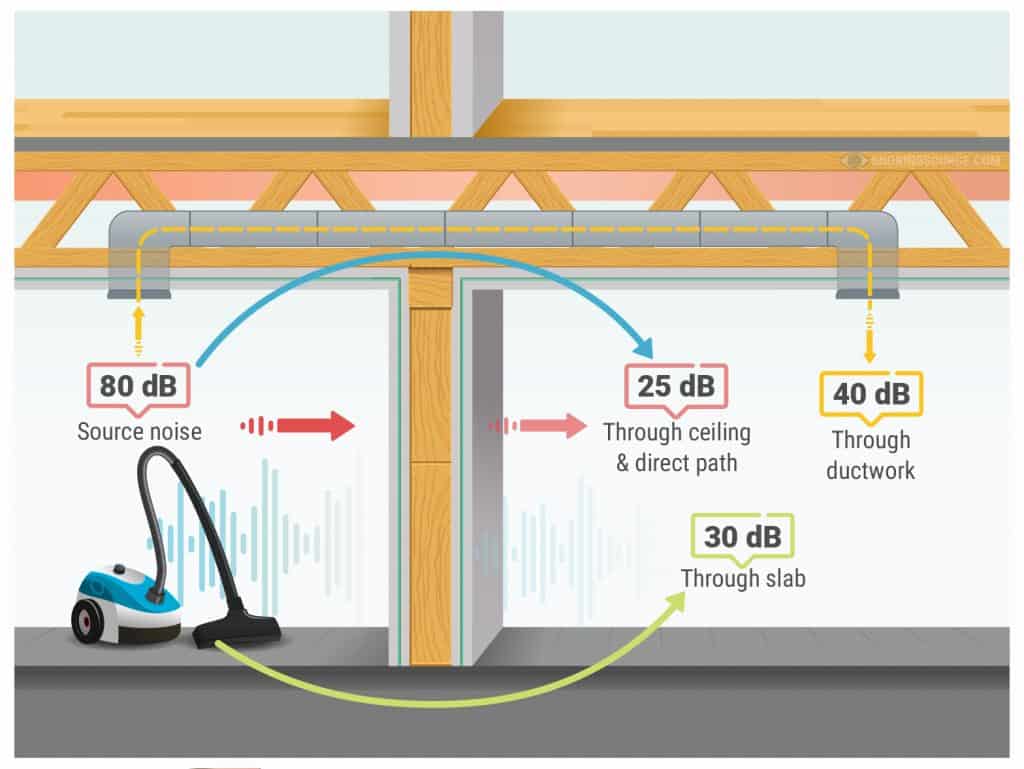
As the name suggests, airborne sound refers to any noise that travels through the air. Common examples include speech, TV, radio, and barking dogs.
The soundwaves from the object, like your drums, travel through the air until they collide with a solid object. The collision causes the soundwaves to travel through the solid object and into the adjacent space.
This is why you can hear people talking or music playing in the room next to you; it’s also why others can hear the sound of your drums coming out of the room you're practicing in.
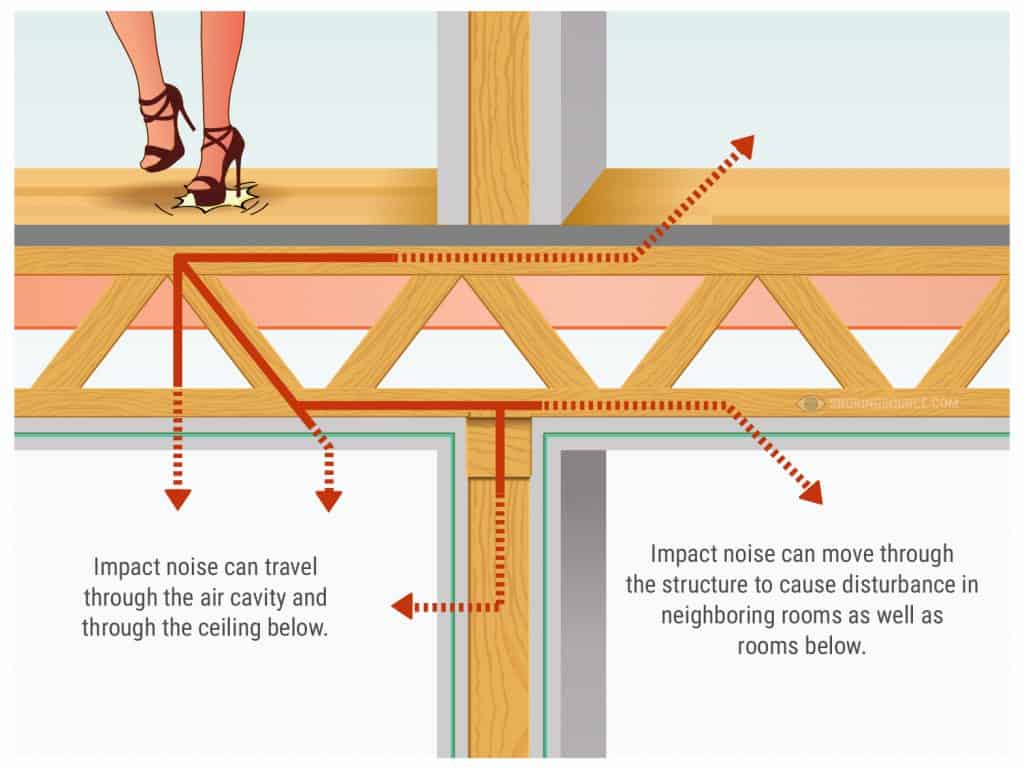
With impact noise, sound occurs as a result of an objects impact with a surface; feet walking on the floor above you or a chair banging into a wall, for example.
When an object impacts with surface, it creates soundwaves, and those soundwaves cause a vibration and travel through the structure and into the adjoining space.
When you play the drums, you make impact noise as you press the pedal of your base drum or when you hit your sticks on your snares or cymbals.
In practice, there are four main methods used to soundproof a space: adding mass/density, damping, decoupling, and absorption.
One of the easiest ways to soundproof an object is to add mass or density to it. The more mass something has, the harder it is for soundwaves to penetrate it.
Using materials with various widths and densities allows you to soundproof a range of frequencies. It's important to note that no matter how heavy something is, it still has the potential to transmit vibrational energy. However you'll still be able to hear low bass frequencies easily.
Damping sound is the reduction of resonance in a room through reflection or diffusion. Meaning sound is dissipated before it has the potential to build up and radiate as sound.
Sound is a form of vibrational energy. This means that sound will conduct, so as long as there is a direct pathway for it it follow.
You can think of this concept like a tin can telephone. As a person talks into one end of the tin can, the vibration is conducted through the string and transmits out of the other can.
However, if the pathway or string were to be cut or "decoupled," there isn't a medium or pathway for the vibrations to conduct through.
Air cavities will resonate. This concept is similar to trapped air in a seashell that allows you to "hear the ocean" or when you blow air across the top of an empty bottle. Both of these sounds are a result of trapped air resonating.
Walls will vibrate from sounds produced in the surrounding rooms. Trapped air in the adjoining rooms also vibrates.
Building a room that's completely soundproof means no sound can go in or out of the space. While this is possible, doing so would be a rather large expense. In most applications, a room that's completely soundproof isn't even necessary.
A drum set and cymbals produces 119 dB on average. However if a drummer were to play a bit softer, even just 10 dB less, they would effectively reduce the perceived sound by half(1).
In terms of soundproofing, you only need to soundproof the space enough to dampen vibrations to produce half the sound.
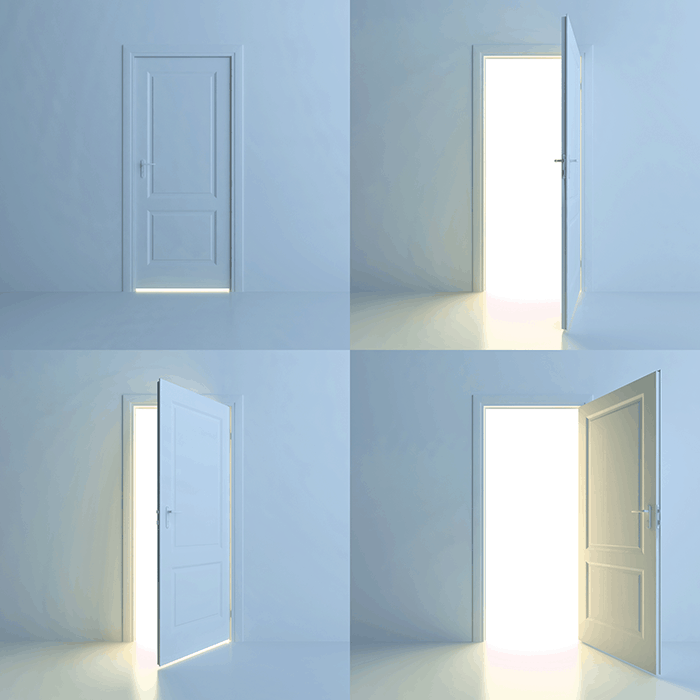
Gaps are an open pathway for air to travel through. As we learned above, air is a great medium for sound. The nulling of airborne noise inside the space is great for people outside the space, however it leads to a lackluster acoustical environment.
Inspect the room for any gaps or air leaks; common spots include the edges of walls, around windows, outlets, and doors. To block the passageways and minimize noise transfer, seal up these gaps.
In most cases your drums will be in a room surrounded by walls. Walls are one of the most common culprits for airborne noise transfer. However, most people don't soundproof during construction and it's usually thought of after the fact.
If you're looking to soundproof walls during construction, we recommend using acoustic insulation or soundproof batting. These materials are specifically designed to absorb, deflect, and prevent the passage of vibrations. However, if you don't have access, blown insulation is usually a better option.
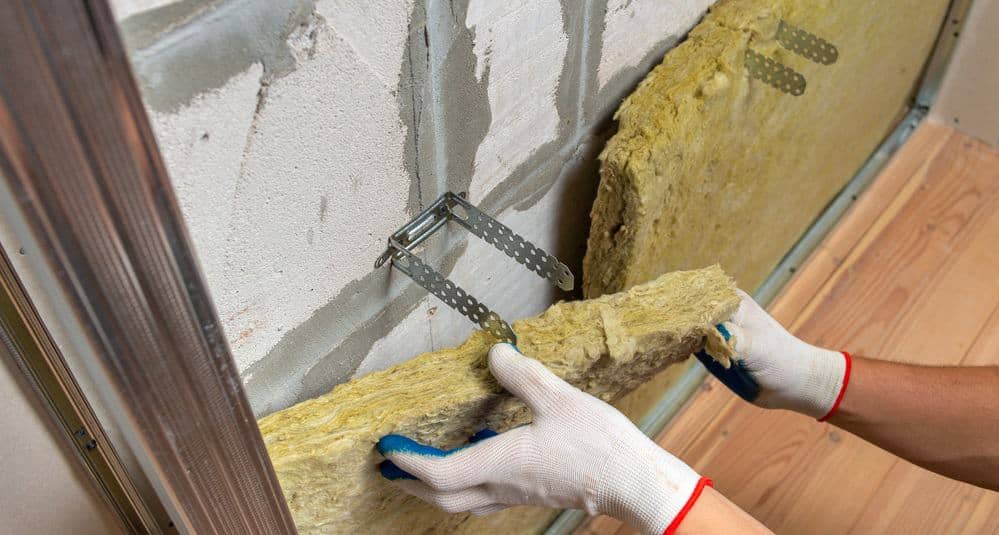
In addition to soundproof insulation, you should invest in acoustically enhanced gypsum drywall. This material is more dense than standard drywall and will help to create a thicker barrier.
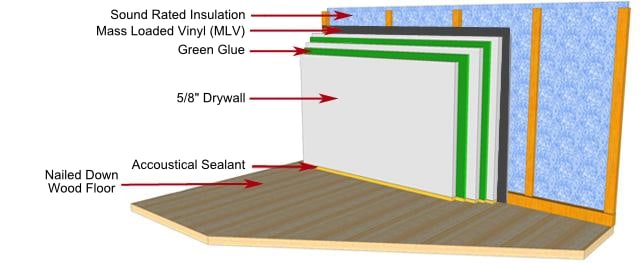
A wall assembly of the following is best practice:
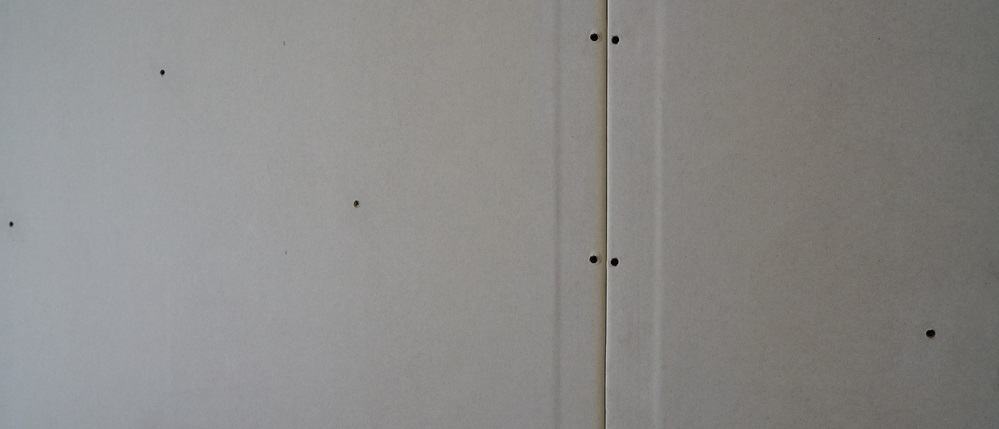
Install an additional layer of drywall. Doing so will add mass and density to the wall, making it harder for soundwaves to travel through. For even better results, apply a green glue layer before affixing the additional drywall layer.
Hang up some sound deadening blankets, sheets, curtains, or other dense sound-absorbing materials. Use nails, tacks, or hang them from curtain rods.
Use acoustic foam tiles. The design and material of the tiles will absorb soundwaves, making it more difficult for them to pass through the wall; plus, the tiles will reduce echo in the room, improving the acoustic environment while you’re playing.

Interior doors are notorious for sound penetration. The majority of interior doors have a hollow core. As a result, soundwaves can easily travel through them.
As we've learned above, one of the easiest ways to soundproof something is to add mass or density to it. By simply replacing the door with a solid-core one you can effectively stop the transmission of sounds. However, replacing your door is a rather expensive upgrade. On average you can expect to pay $200 - $300.
As an alternative you can hang soundproof curtains, blankets, or sheets in front of the door to absorb sounds. Simply close the curtains when you're playing and then open them when you leave the room.
Whether the door is hollow or solid, placing a draft stopper at the bottom of the door will help block the air leak and stop sound transfer.
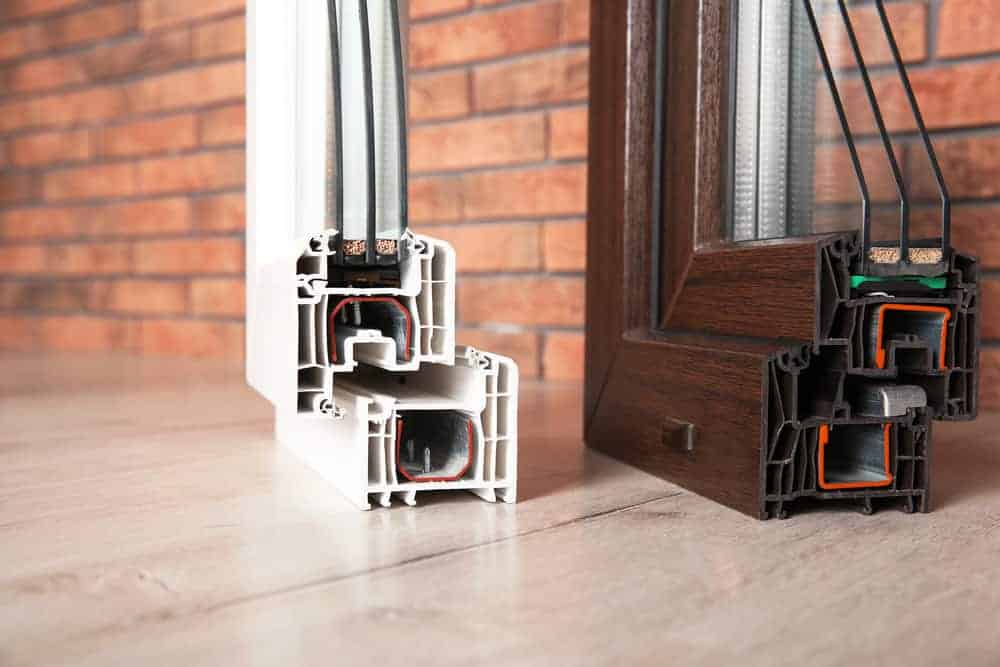
Just like your door, windows are a great structure for sound to travel through. Older houses generally have single pane windows and aren't capable of blocking soundwaves.
In a similar fashion, you can simply replace these windows with double or triple pane windows, or laminated glass. Doing so though is quite expensive, ranging from $385 - $1000 per window.
Learn more about soundproof window pricing: Here
If replacing the window isn't an option for you, you have a few options.
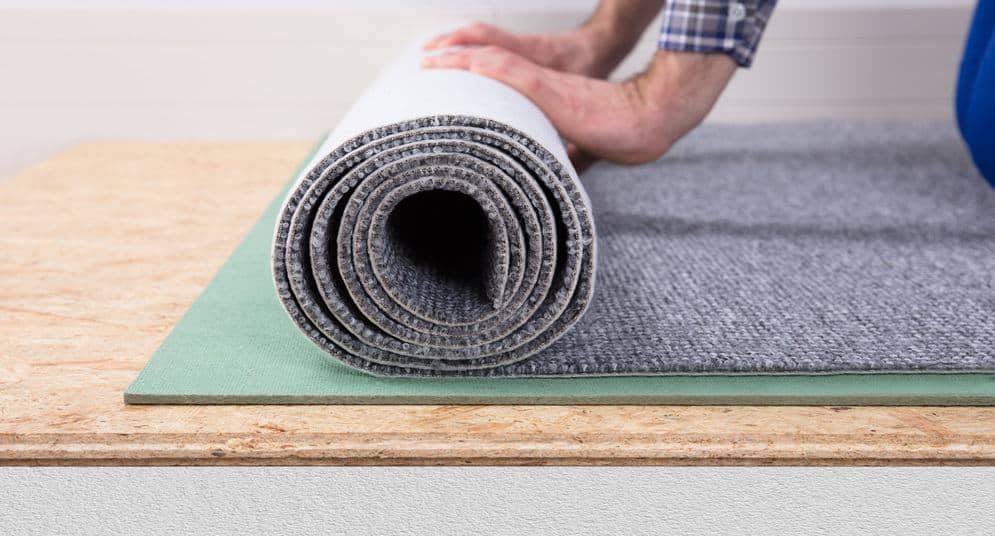
Ideally, installing wall to wall carpet with soundproof underlayment is your best option. Carpeting helps to absorb soundwaves, and underlayment ameliorates this effect.
However, removing your current flooring, placing underlayment on the sub-floor and then installing wall-to-wall carpeting is expensive.
If you have the option, pick a room that already features carpet. Avoid rooms that feature wood floors or laminate as they're more prone to the effects of impact noise.
An affordable solution is to place carpets or area rugs underneath your drum kit to help combat airborne and impact noise. As an added effect, affix a layer of soundproof material to the underside of the carpets/rugs to help further absorb sound.
Regardless of how awesome your drum playing skill may be, the noise that they create may be distracting to others.
As we've pointed out, completely soundproofing a room for drums is expensive and may not even be necessary. By employing the methods above, you can effectively remove half the loudness or 10 dB of noise.

Snoringsource.com is a participant in the Amazon Services LLC Associates Program, an affiliate advertising program designed to provide a means for website owners to earn advertising fees by advertising and linking to amazon(.com, .co.uk, .ca etc) and any other website that may be affiliated with Amazon Service LLC Associates Program.